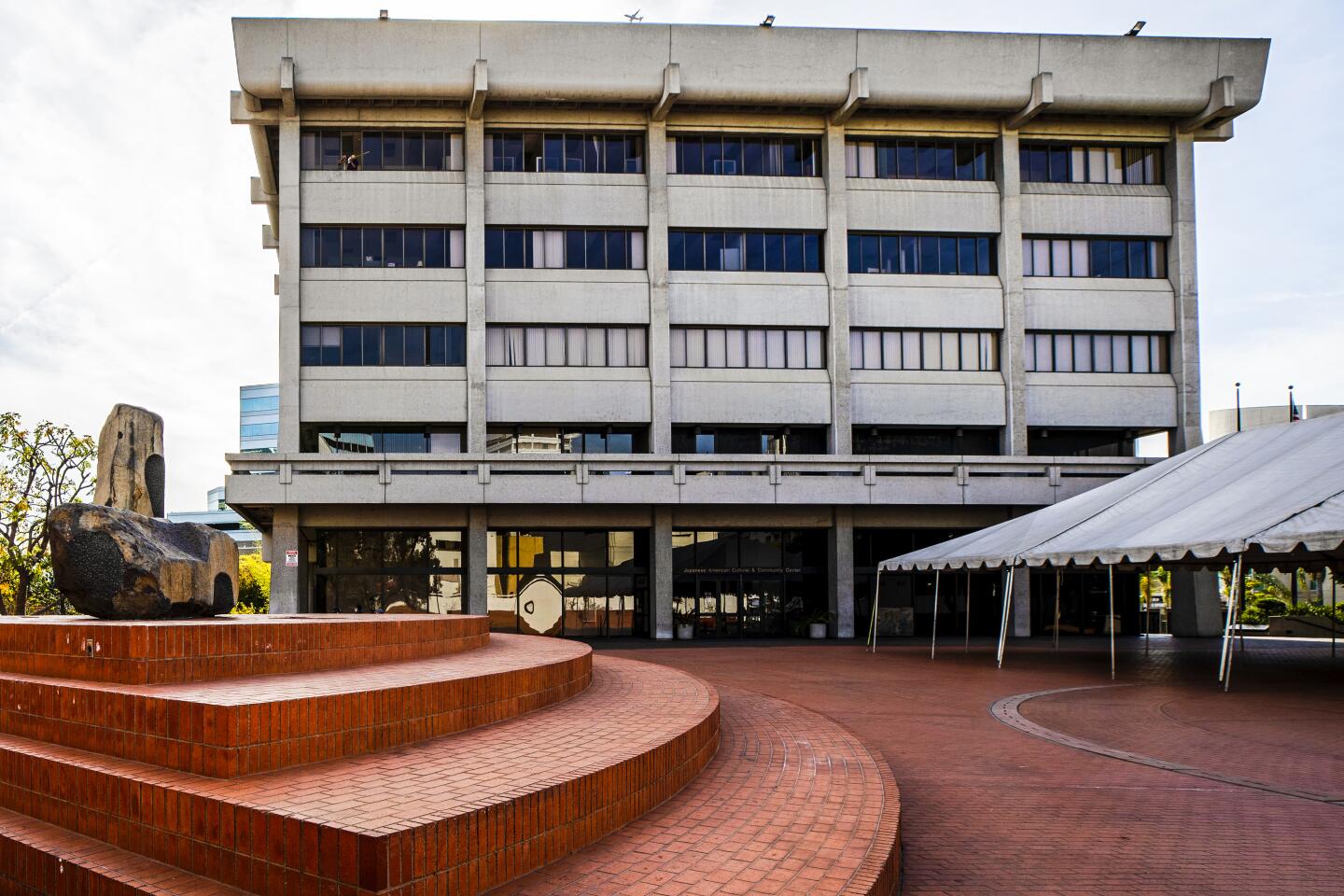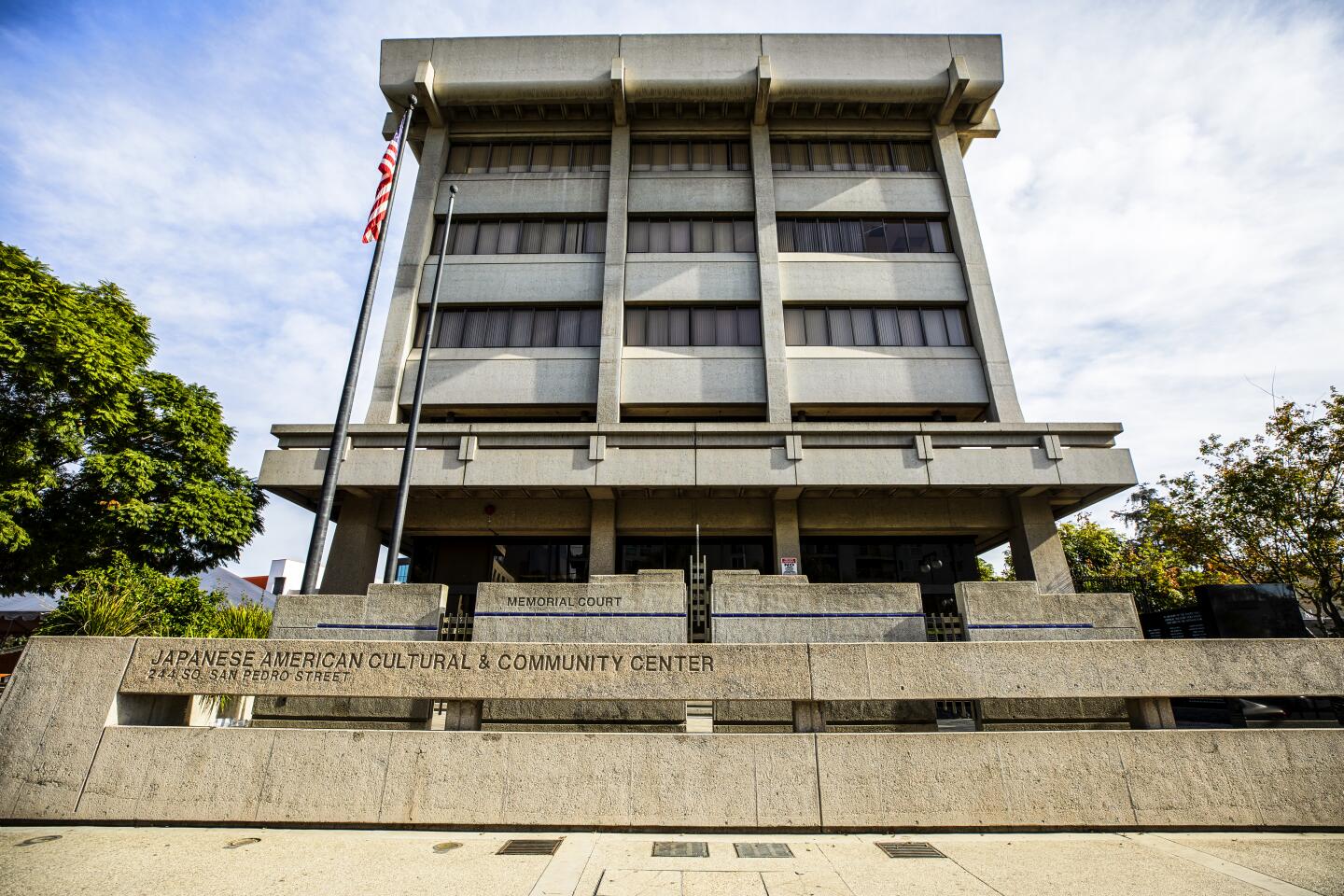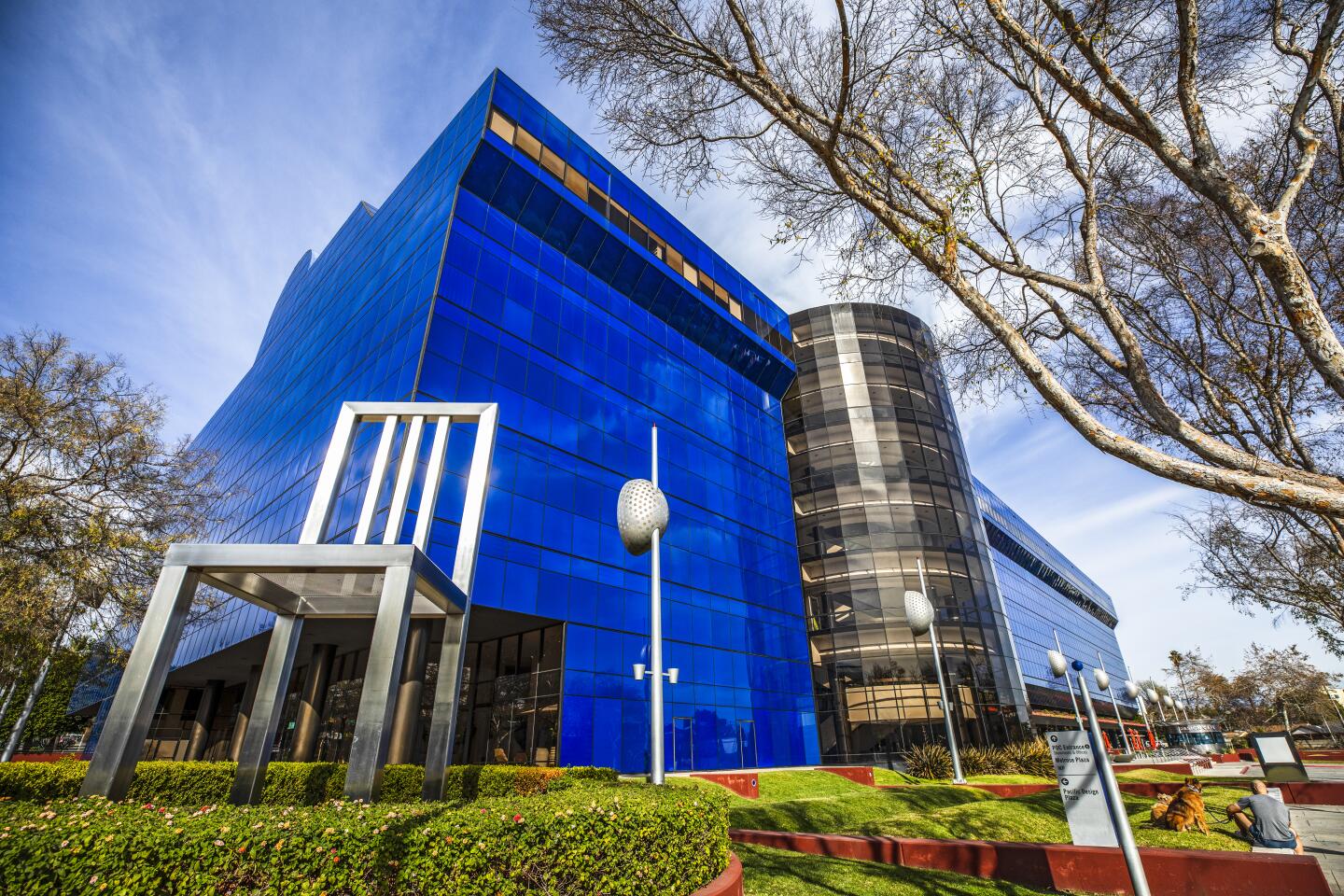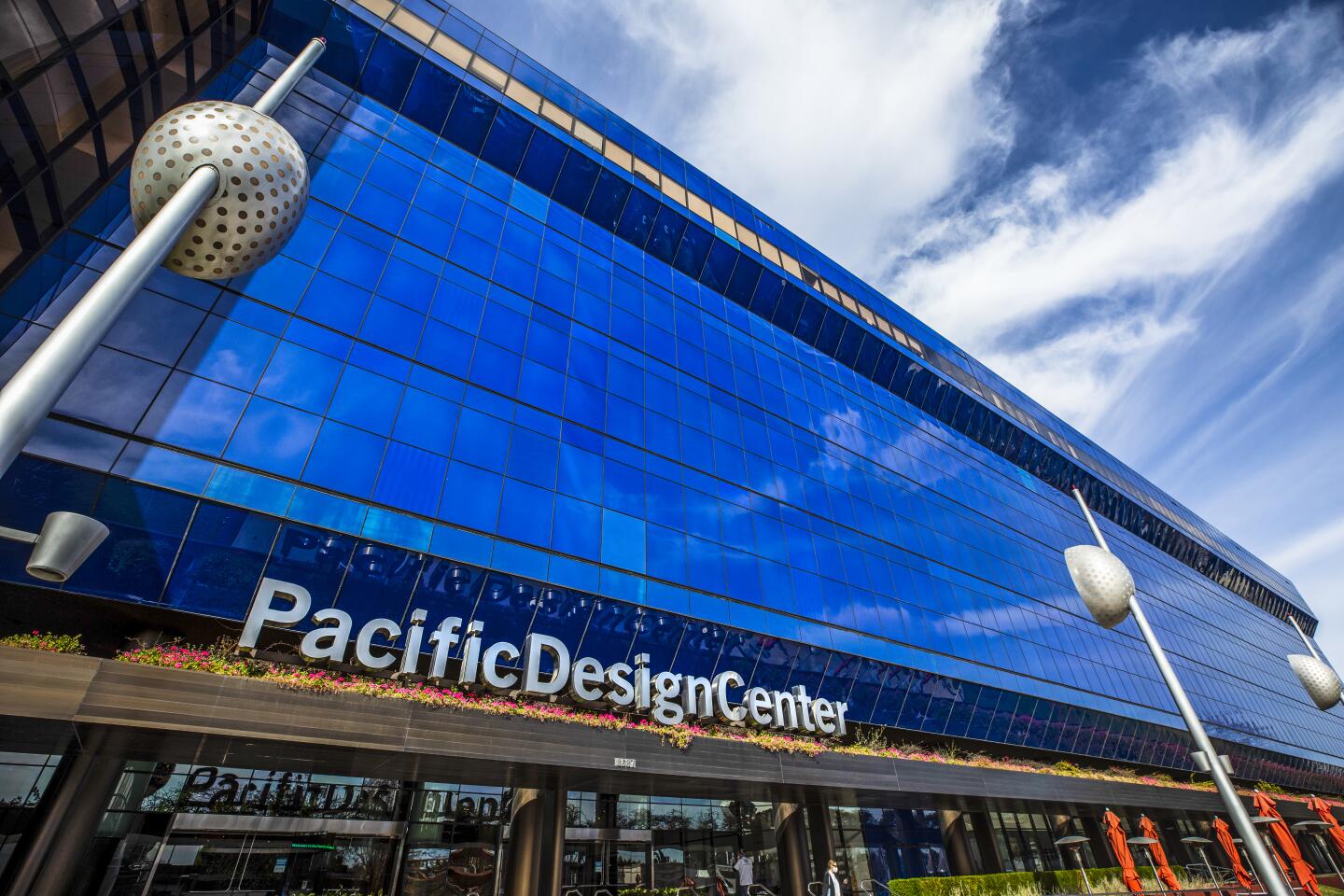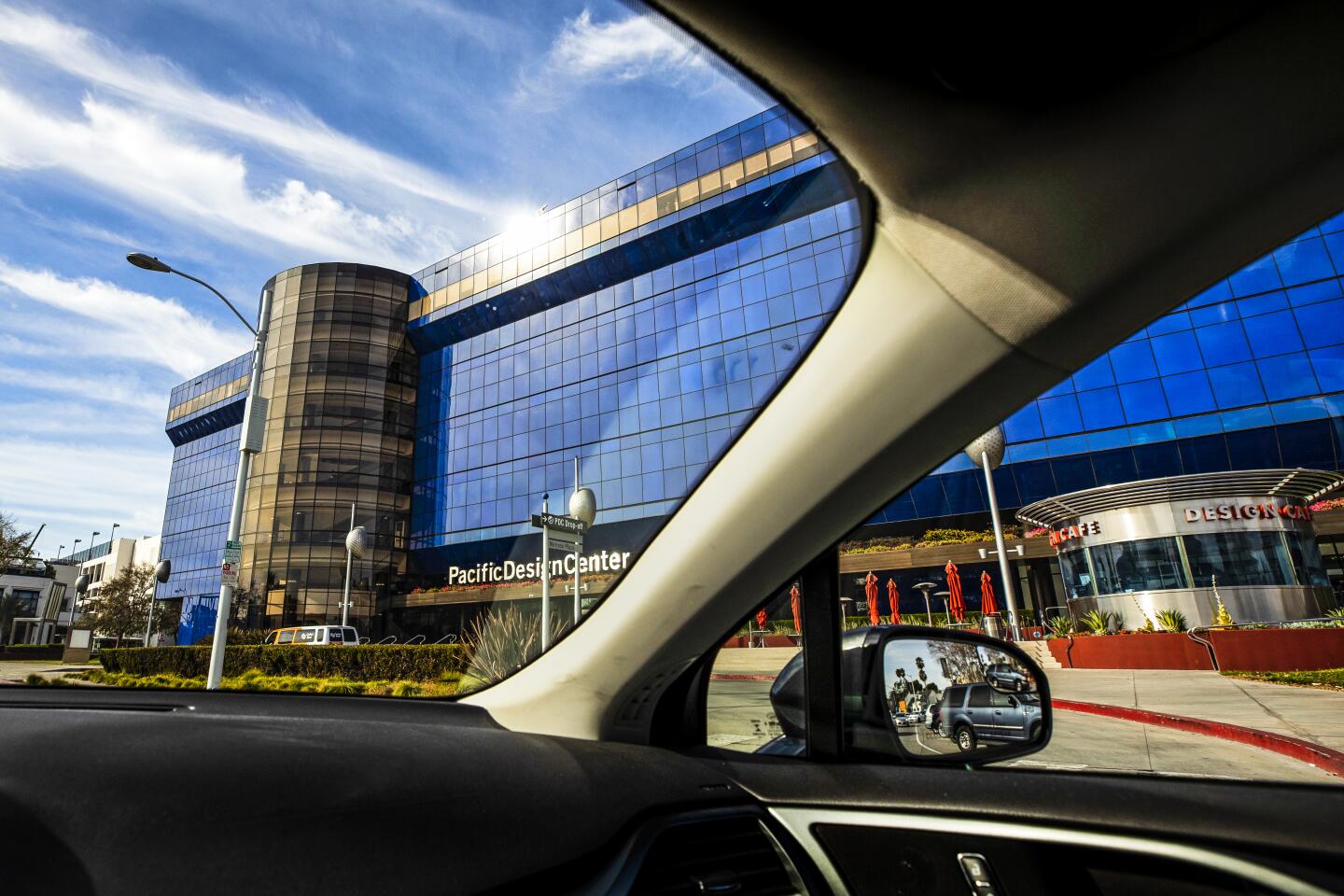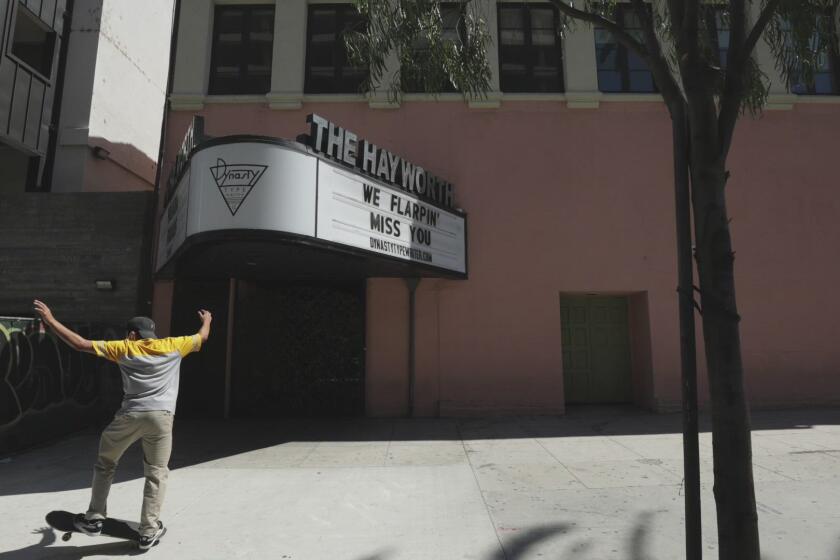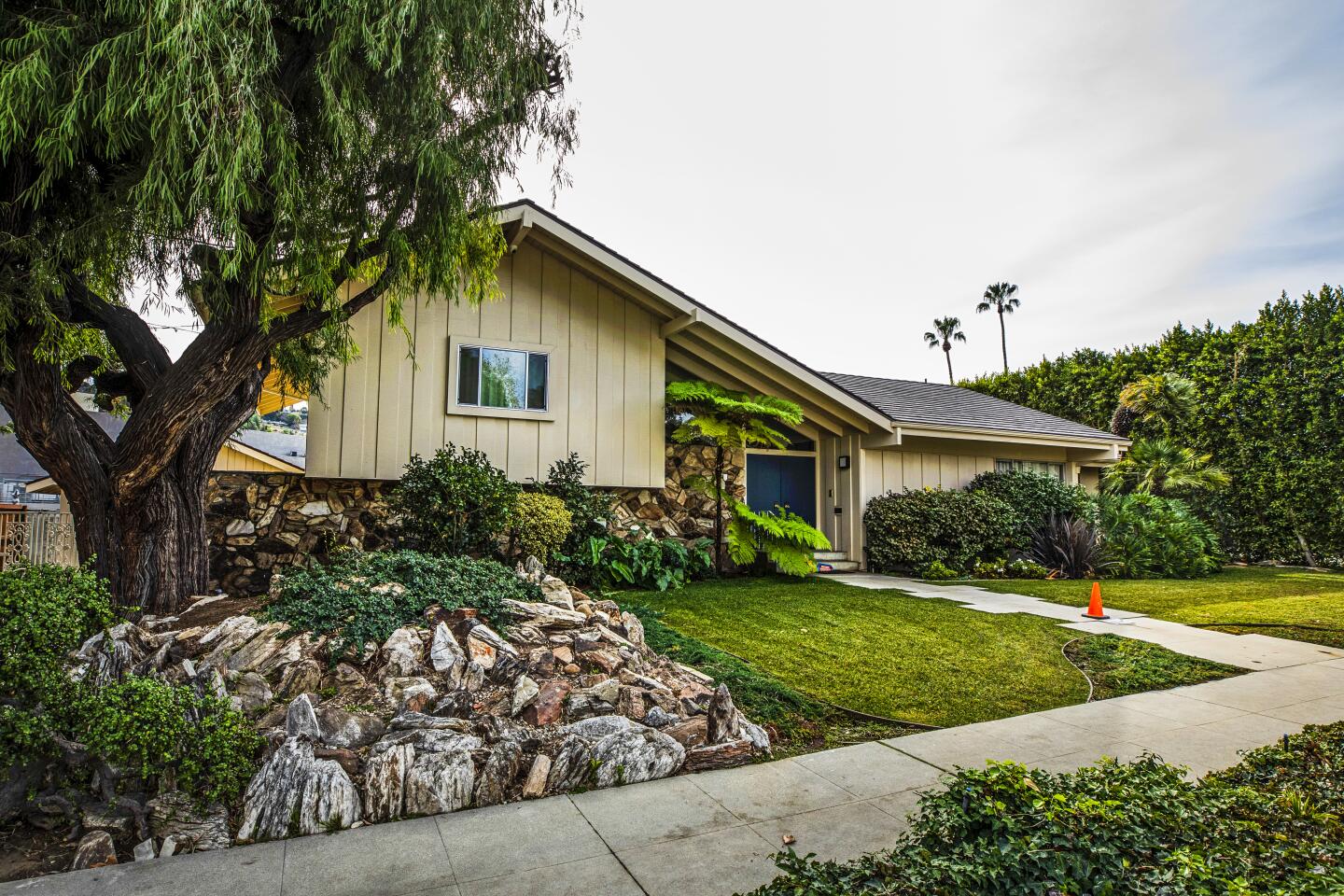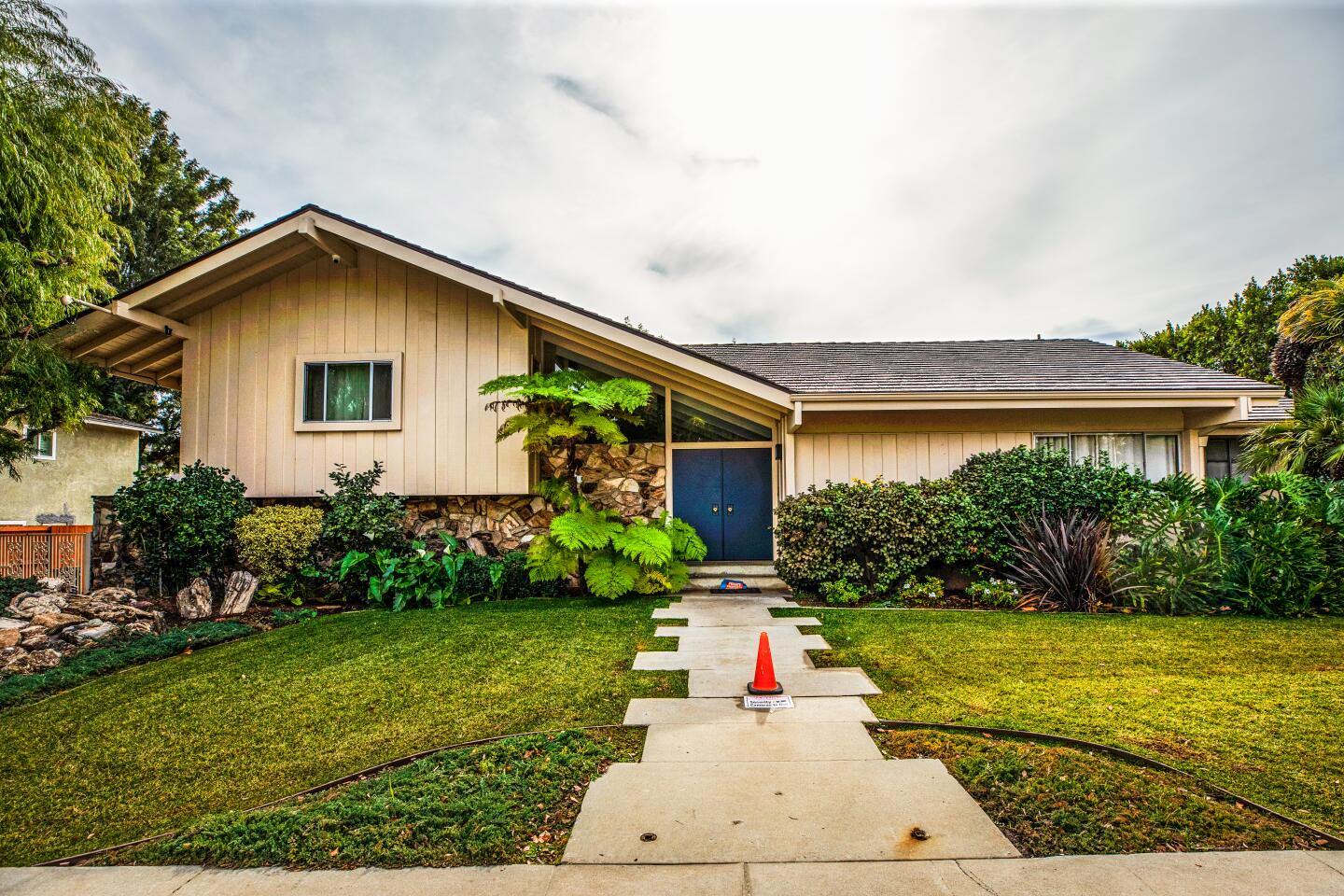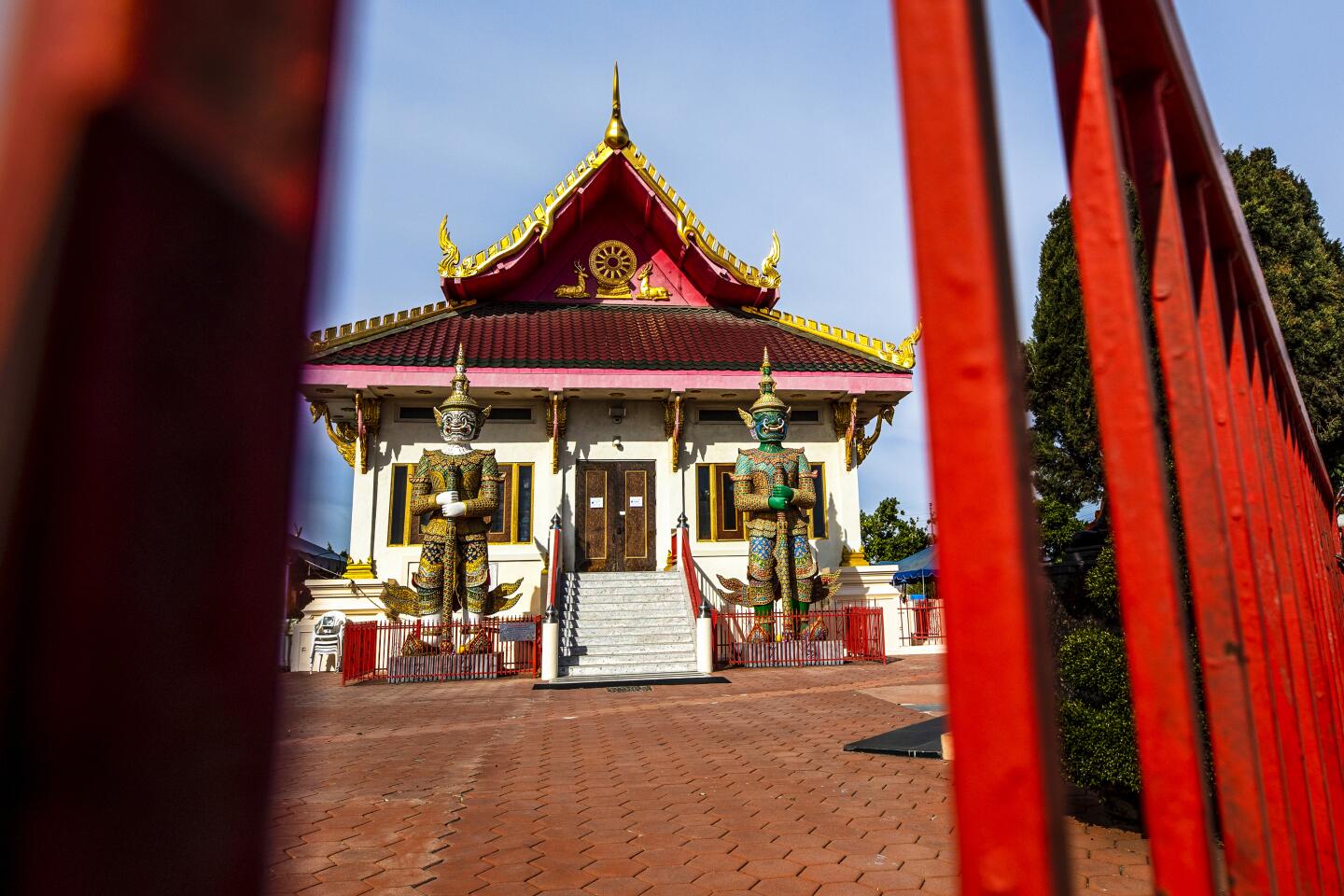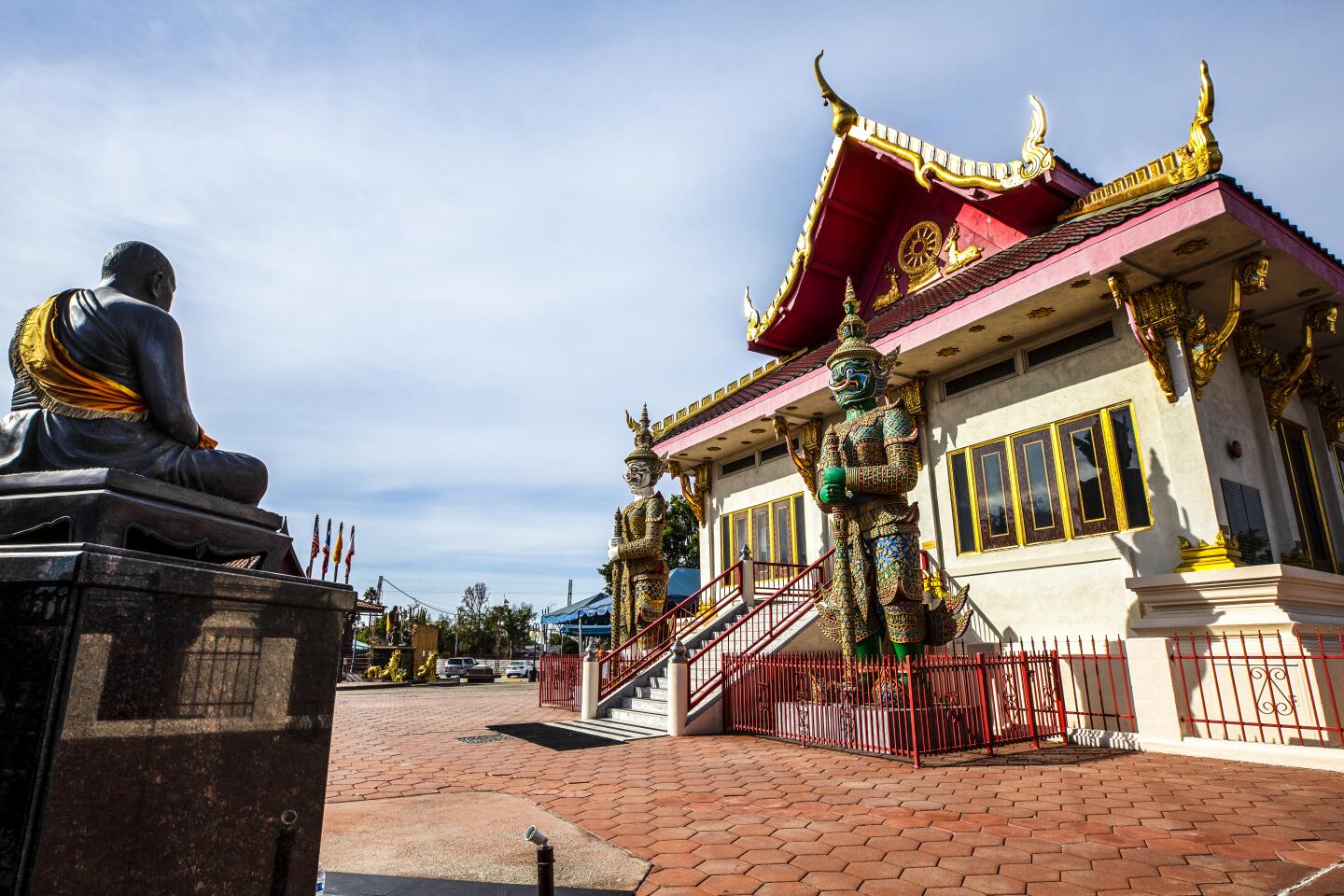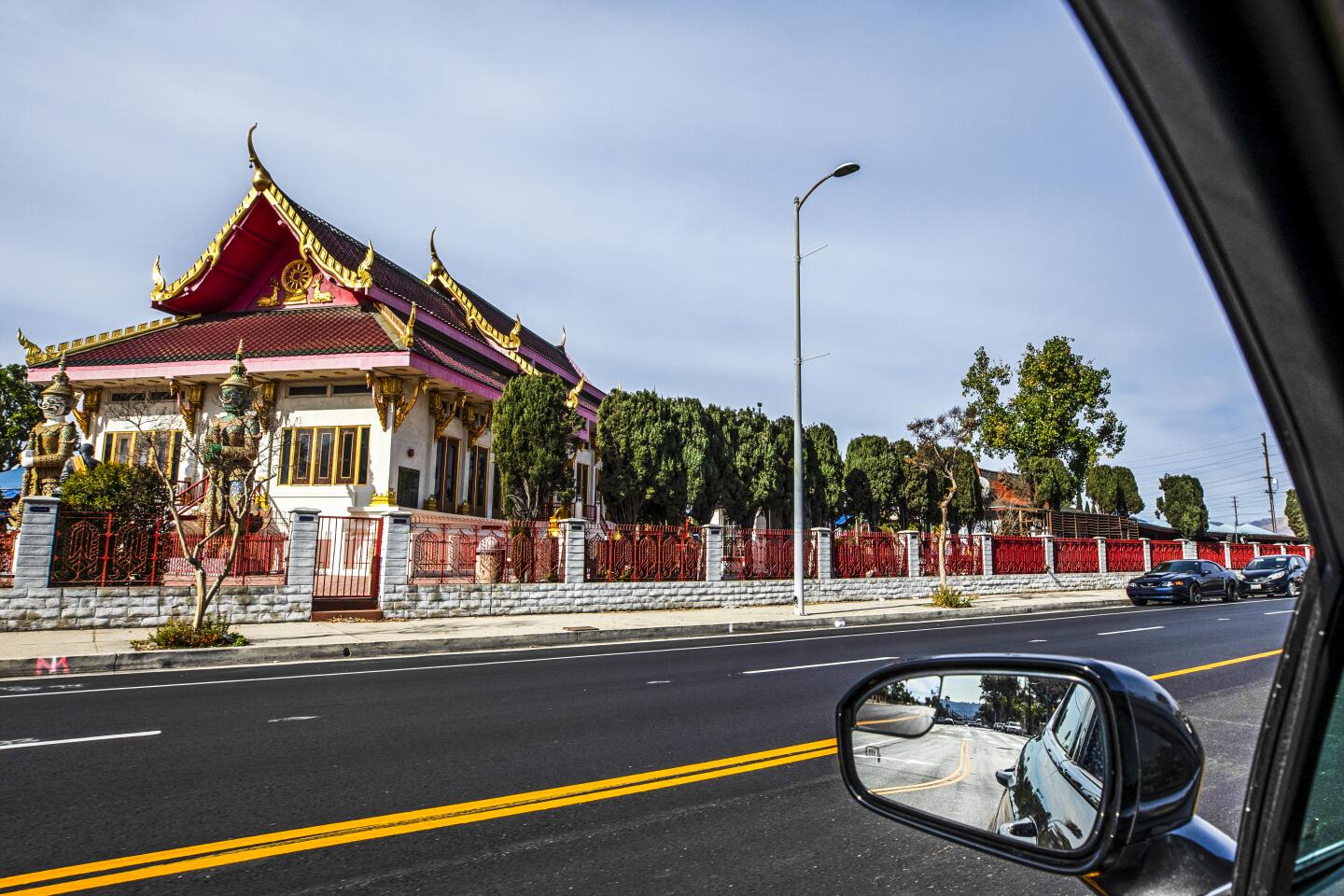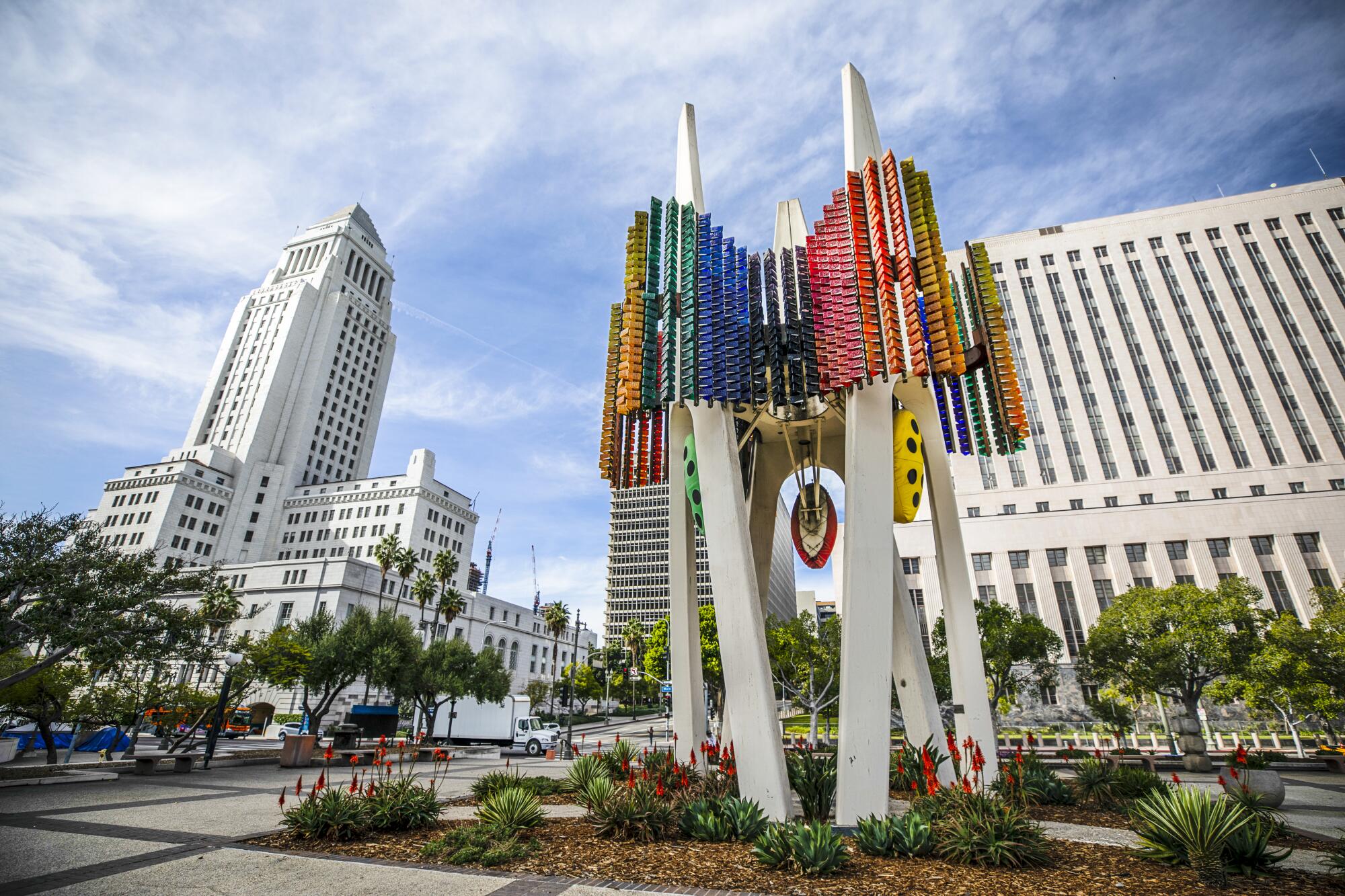
- Share via
The 1970s turned 50 in 2020. The Los Angeles Conservancy, whose mission is to preserve the historic places that make L.A. County unique, is celebrating with “Rolling Through the ‘70s: A Weekend in Los Angeles.” The educational initiative features three self-driving architectural tours showcasing buildings, cultural sites and landmarks from the pivotal decade. Of the 32 places included, here are nine to whet your appetite. Turn on your GPS, link to the L.A. Conservancy’s collection of ‘70s sound bites and songs and enjoy the ride.
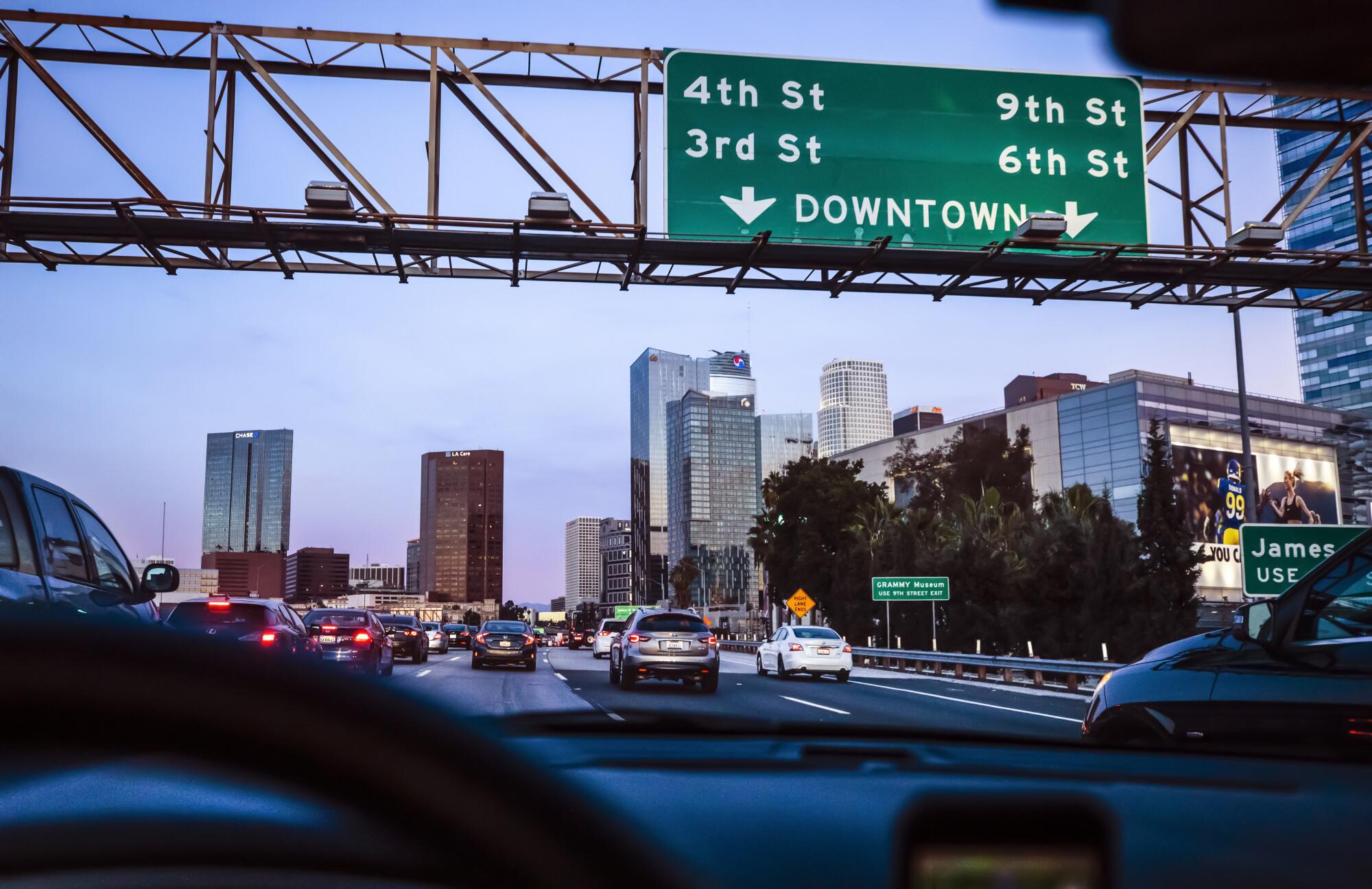
Start by admiring the view of downtown L.A. from the 110 Freeway between Interstate 10 and U.S. 101. Impressive skyline, right? It didn’t exist before 1956, when voters repealed the restriction that limited building heights to 150 feet. You’re looking at the result.
Try to spot two notable buildings that went up in the 1970s: The square tower that looks as if it sits askew on its building site is Bank of America Plaza (333 S. Hope St.) The 55-story granite office building from 1974 was designed by A.C. Martin & Associates. Instead of parallel to the street, the architects positioned the high-rise so its four sides face true north, south, east and west.
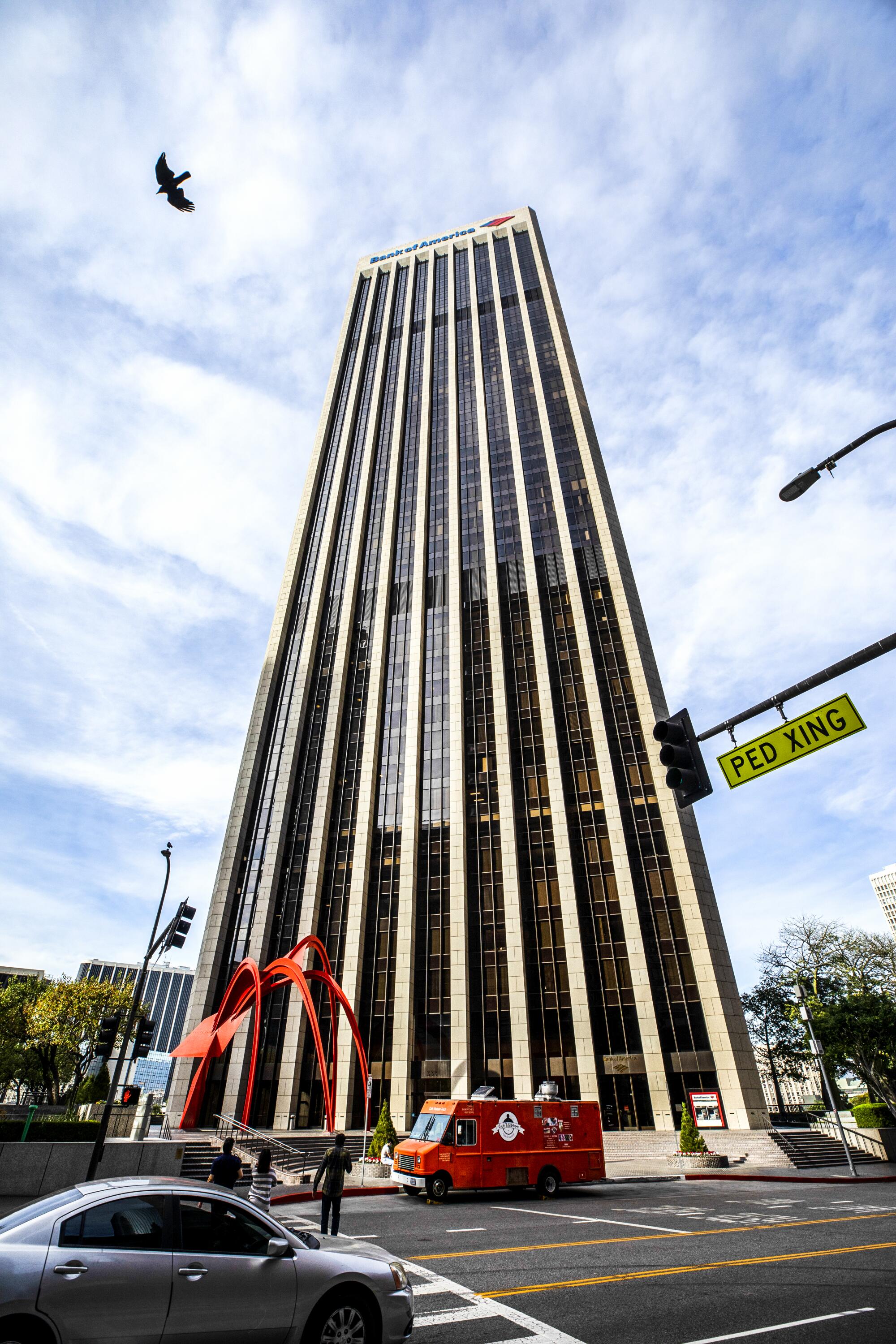
You’ve seen the futuristic Westin Bonaventure Hotel & Suites (404 S. Figueroa St.) in movies such as “True Lies” and “Mission Impossible III.” The cluster of shimmering bronze-windowed towers, completed in 1976, evokes a rocket ship set to launch. The 33-story “atrium hotel,” designed by Atlanta architect John C. Portman Jr., features a top-floor revolving lounge with a 360-degree view. Consider it a suitable spot for a post-COVID celebration.

Exit the 110 on Third Street and drive south on Flower Street for a closer look at the buildings, then stop in the loading zone in front of City National Plaza (555 S. Flower St.). Also designed by A.C. Martin & Associates, the two 52-story polished-granite office towers, completed in 1972, were the world’s tallest twin towers before the completion of New York’s World Trade Center. Check out the red-and-orange sculpture that rises out of the plaza’s fountain like spiraling stairways.
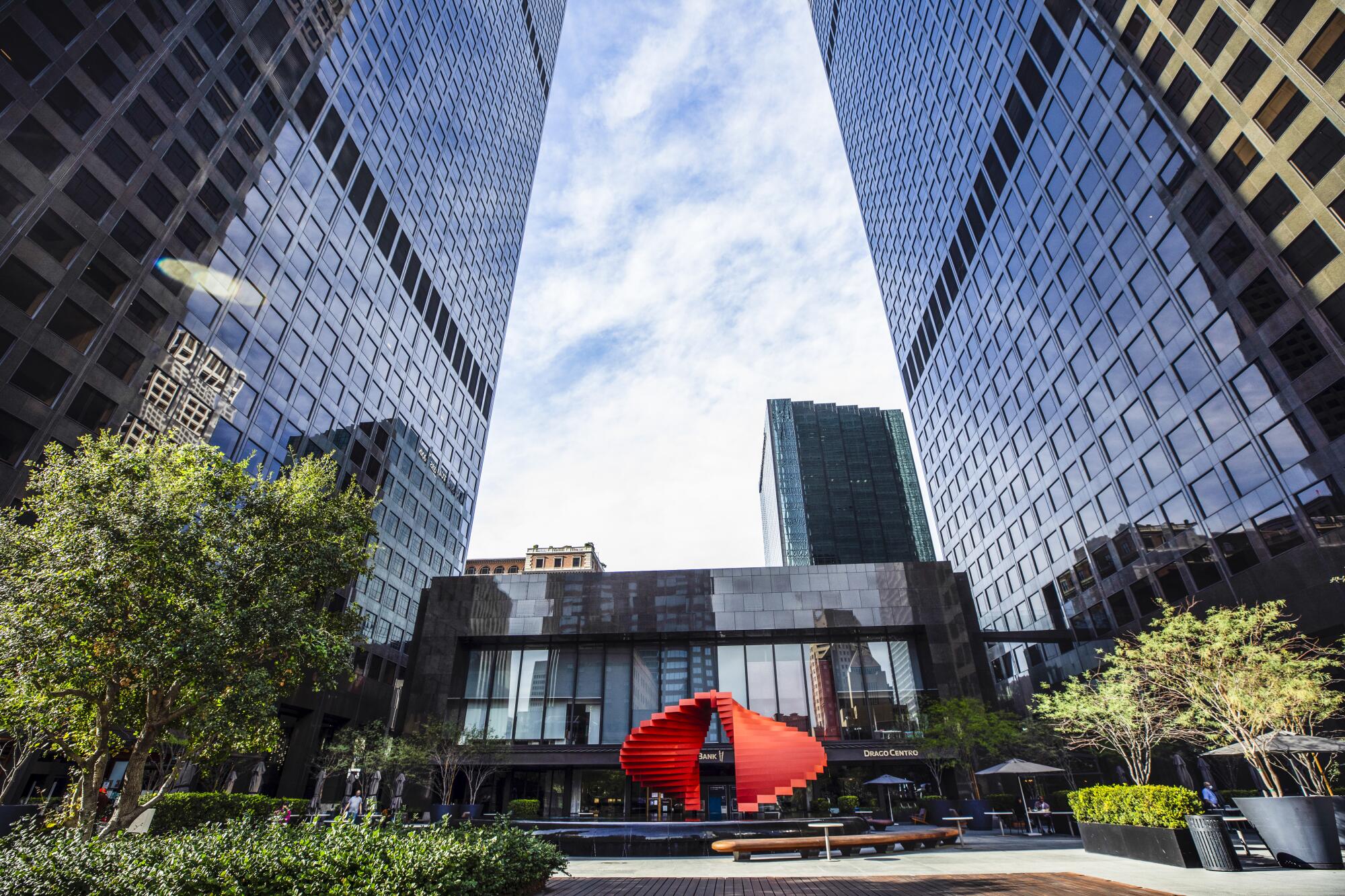
From the high-rise heart of downtown, drive south on Flower Street to 6th Street. Turn left and continue 1.4 miles to San Pedro Street. Turn left and drive about eight blocks to Little Tokyo.
The Japanese American Cultural & Community Center (244 S. San Pedro St.) was constructed between 1978 and 1983. Japanese American architects Kazumi Adachi, Kiyoshi Sawano and Hideo Matsunaga softened the Brutalist lines of the six-story building with upturned eaves and other elements of traditional Japanese pagoda architecture.
The city has some of the most beautifully preserved architectural masterpieces in California. Hop in the car and let’s explore.
Park and walk through the plaza designed by artist Isamu Noguchi. His basalt boulder sculptures here reflect the Japanese tradition of slightly altering natural objects. Peer into the center’s James Irvine Japanese Garden (now closed because of COVID-19) with its waterfall, stream and tranquil pond.
Continue on San Pedro Street to Second Street and turn left. In two blocks, turn right on South Main Street and drive north to a favorite roosting spot for pigeons.
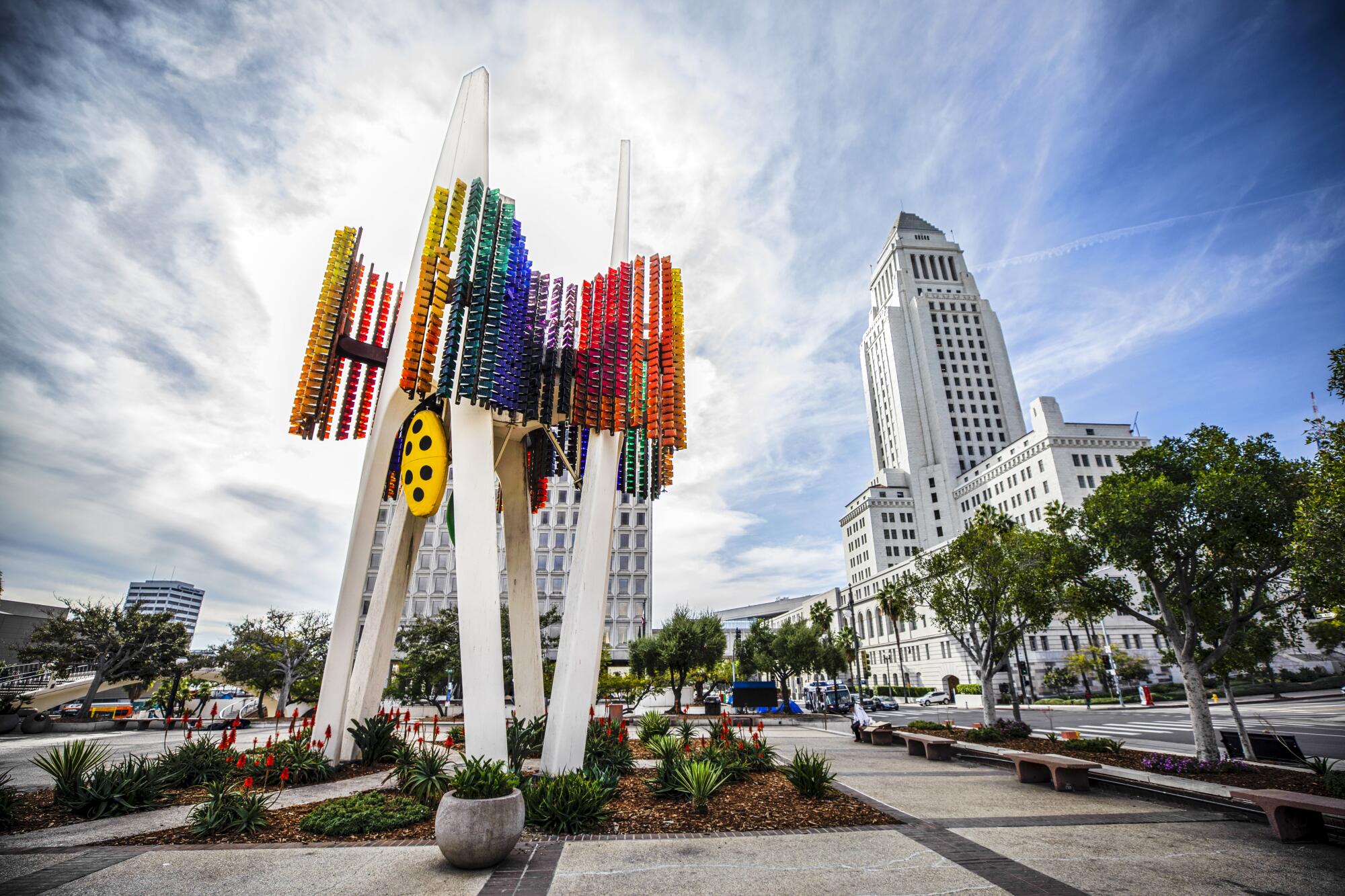
To liven up downtown L.A., the Triforium (302 N. Main St.) in 1975 was installed on Fletcher Bowron Square in the shadow of City Hall. Artist Joseph L. Young’s 60-foot-tall “polyphonoptic” sculpture featured nearly 1,500 multicolored Venetian glass prisms and a 79-note, glass-bell electronic carillon. An internal computer synchronized music-and-light shows, but it often malfunctioned.
A 2006 restoration replaced the carillon with a CD player; a later renovation resulted in three Triforium concerts in 2018. A Facebook group vows someday to bring what some critics called the “Trifoolery” back to life.
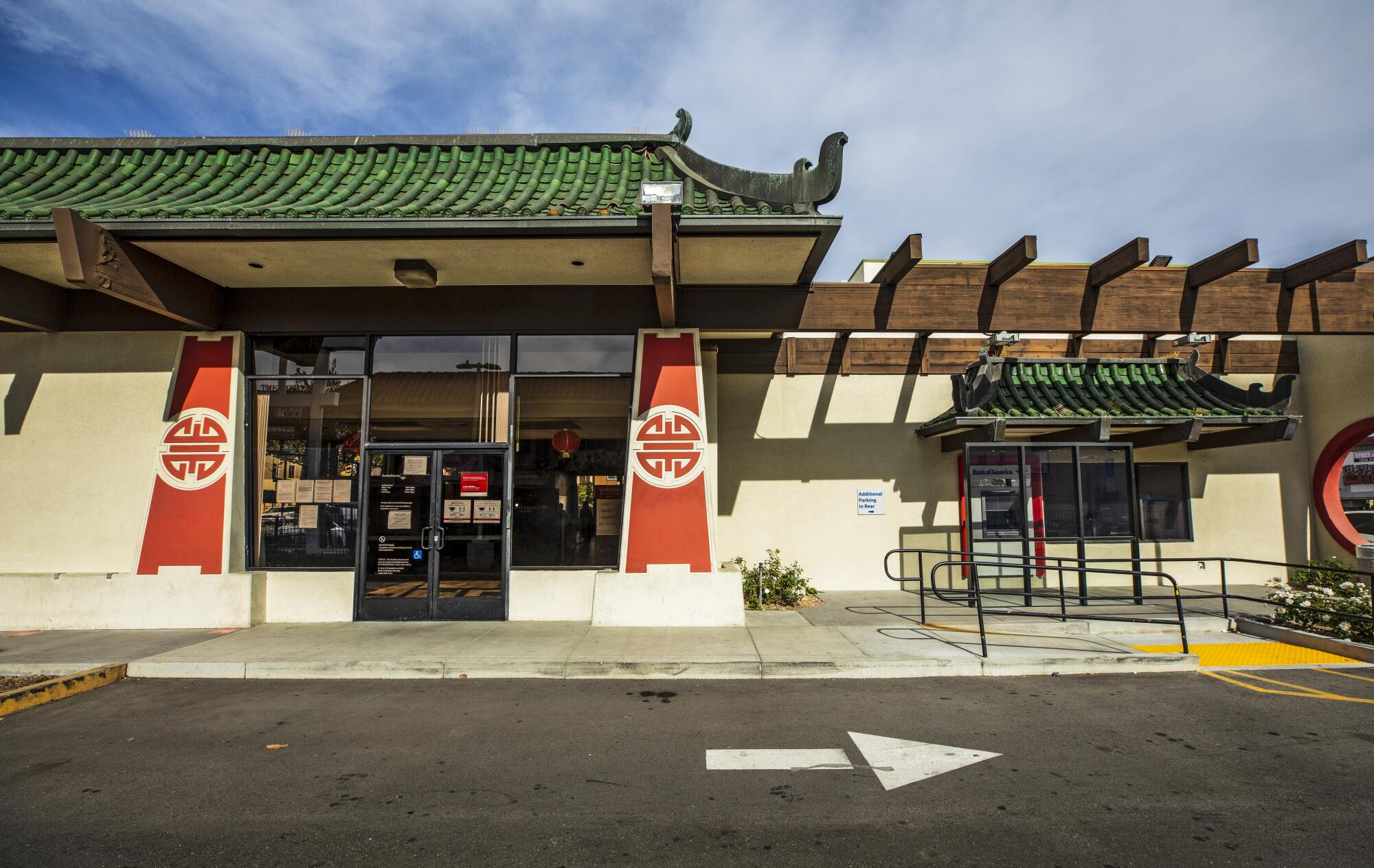
Continue on North Main to Arcadia Street and turn left. Turn right onto North Broadway and drive past the Chinese restaurants, pagodas and curio shops to Bank of America Chinatown (850 N. Broadway).
New Chinatown, which dates to 1938, was home to several Chinese-owned banks. It wasn’t until 1972 that Bank of America opened a branch there. It was designed by Gilbert Lester Leong, the first Chinese American to earn a USC architecture degree. Leong incorporated elements of traditional Chinese architecture such as the jade-green tile roof. View some of the neighboring buildings designed by Leong, including the Kong Chow Family Association and Temple (931 N. Broadway) and the Chinese United Methodist Church (825 N. Hill St.).
From Chinatown, take the 101 north to Melrose Avenue, then head west on Melrose about four miles to the Pacific Design Center (8687 Melrose Ave., West Hollywood).
This citadel of home and commercial interior design was a far cry from the high-rises going up downtown when the first phase was built in 1975. The bulbous, blue glass-skinned, 750,000-square-foot Center Blue was designed for Gruen Associates by Norma Merrick Sklarek and Argentine architect César Pelli, who was inspired by a vision of brightly colored glass fragments fallen to earth.
Hidden in the urban sprawl are historic buildings that range in style from Neo-Gothic to Art Deco to Midcentury Modern
Some critics lauded the building; others called it the “Blue Whale.” In 1988, a 450,000-square-foot green glass building arose beside it. Two curved red-glass office towers completed the campus in 2011.
From the PDC, drive east on Santa Monica Boulevard to Crescent Heights Boulevard. Turn left, continue to Sunset Boulevard and stay in the left lane to merge onto Laurel Canyon Boulevard.
Continue on Laurel Canyon Boulevard into the San Fernando Valley. Turn left on Ventura Boulevard, then right on Tujunga Avenue and right on Dilling Street to reach the Brady Bunch House (11222 Dilling St., Studio City).
OK, so this split-level ranch house was built in 1959, but it’s a must-see on a tour of ‘70s L.A. architecture. The exterior was used in the opening and closing shots of the classic 1969-1974 sitcom of the same name. (The interiors were filmed on a studio lot.) In 2018, HGTV purchased the house for $3.5 million and renovated it so that it would match the house in the TV series inside and out. The undertaking was captured in “A Very Brady Renovation,” a 2019 HGTV reality miniseries. You won’t be the only one taking a selfie here. Supposedly it’s the most-photographed American house after the White House.
It’s about a 20-minute drive on Tujunga Avenue and California 170 north to Wat Thai of Los Angeles Buddhist Temple (8225 Coldwater Canyon Ave., North Hollywood), the largest Thai Buddhist temple in L.A. County. The religious shrines and the two Thai temple guardian statues will make you feel as if you’re in Bangkok.
Wat Thai dates to the early ‘70s, when many Southeast Asians, who had escaped the Vietnam War and its aftermath, immigrated here. The Thai Department of Religious Affairs designed the plans, and local architects revised them to meet building codes.
In the 1980s, the temple’s parking lot turned into a bustling Thai street market on weekends. Members and Thai-food fans flocked to stalls selling homemade coconut fritters and sticky rice with mango. In September the COVID-19 lockdown put the street market on hold.
More to Read
Sign up for The Wild
We’ll help you find the best places to hike, bike and run, as well as the perfect silent spots for meditation and yoga.
You may occasionally receive promotional content from the Los Angeles Times.
